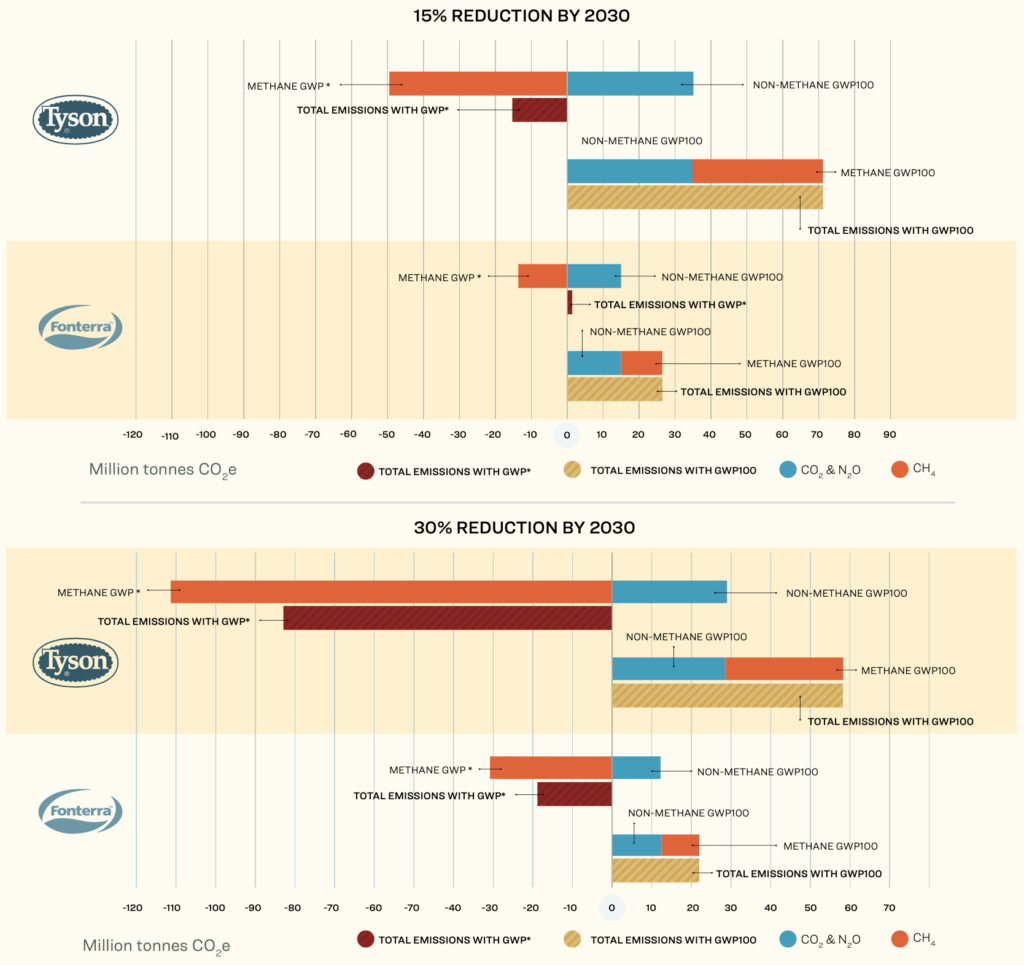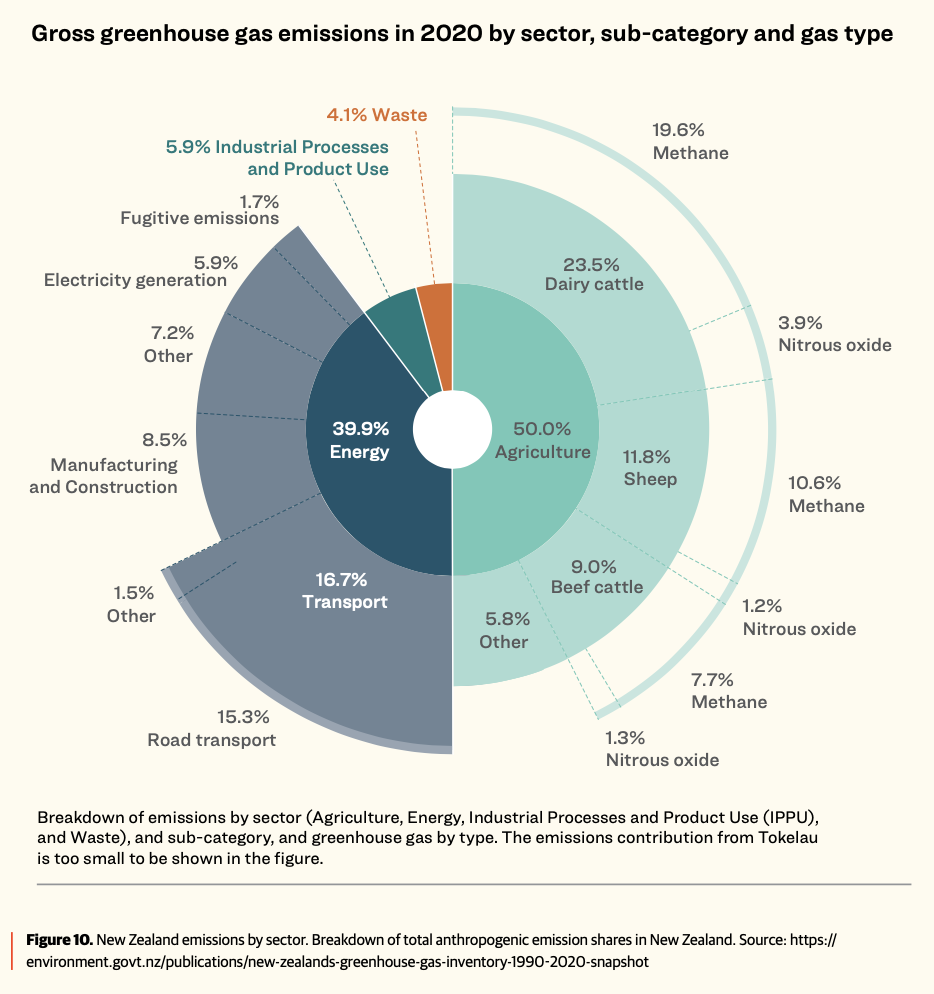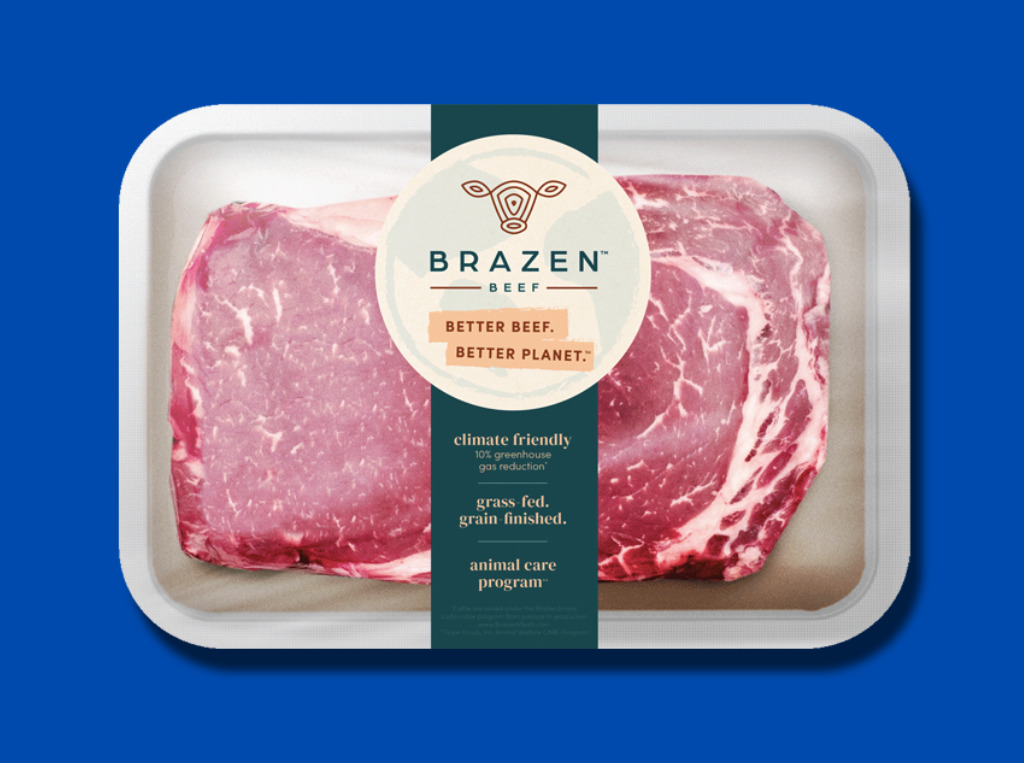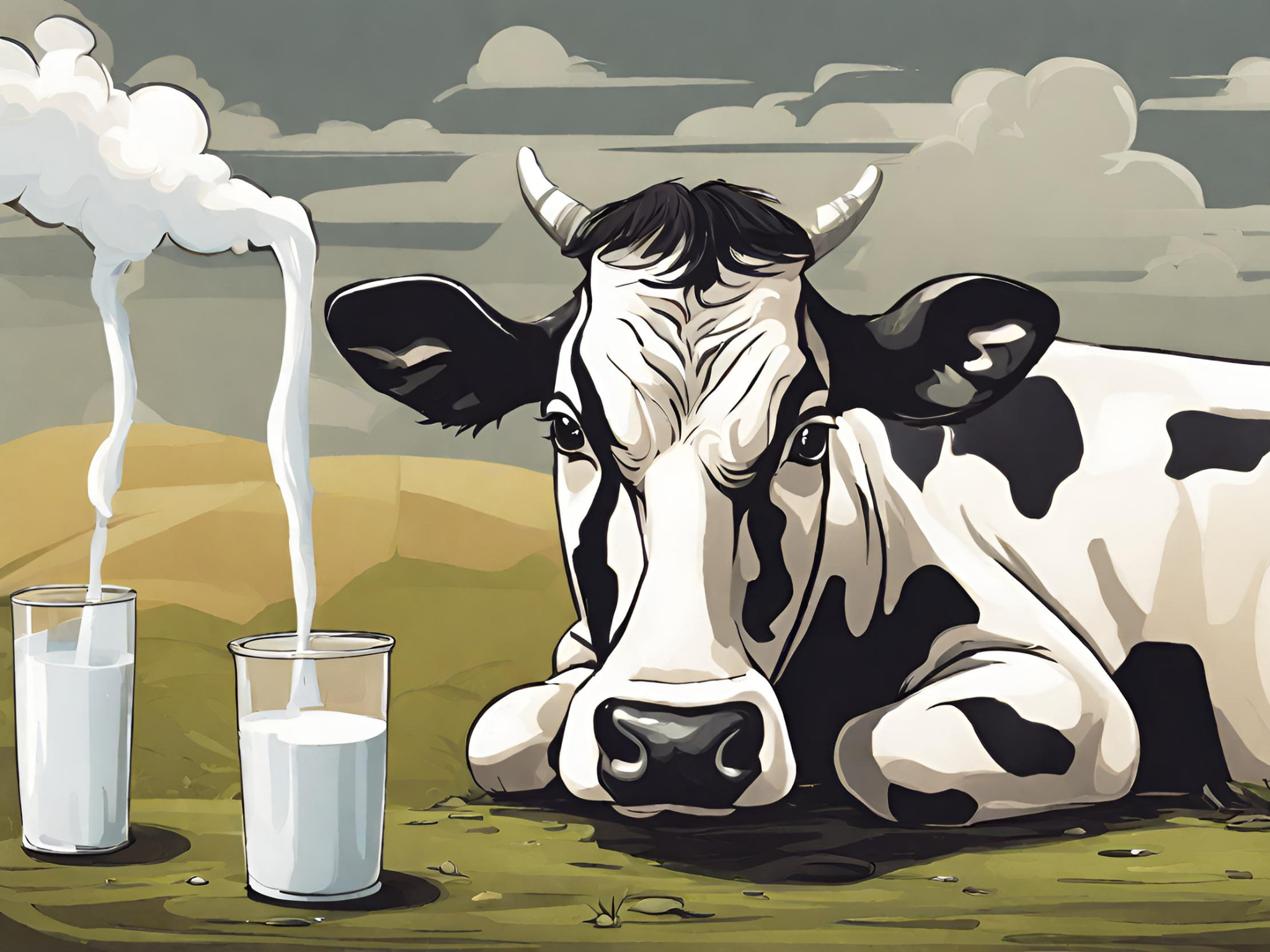GWP*: How the Meat & Dairy Industry is Pushing for a Methane Reporting Tool That Enables Greenwashing
8 Mins Read
Meat and dairy producers as well as governments are championing GWP*, a new metric to measure methane emissions that would enable them to understate their emissions impact and avoid climate action, according to a new report by the Changing Markets Foundation.
The world’s meat and dairy companies are pushing for a new way to calculate and report their methane emissions, arguing that it better accounts for the gas’s short-lived nature. For example, the gas typically has a lifespan of up to 12 years, compared to hundreds of years for carbon.
The problem is that methane, while in the atmosphere for a shorter time, is much more potent than carbon. It has around 28 times the impact of carbon dioxide over a 100-year period, and 80 times over a 20-year period. The new tool being proposed by the animal industry and some governments to measure this impact, called global warming potential star (GWP*), would mean that many of these big polluters would be able to play down their methane emissions and avoid climate action.
That’s according to a new report by the Changing Markets Foundation, titled ‘Seeing Stars‘. Currently, governments and the Intergovernmental Panel on Climate Change (IPCC) use GWP100 to measure the warming potential of total greenhouse gas emissions over a 100-year period. These are expressed in carbon dioxide equivalents (CO2e). GWP*, on the other hand, focuses on changes in the rate of emissions between two points in time (usually over a decadal timescale) rather than the absolute level of emissions.
How GWP* will radically alter meat and dairy’s methane reporting

Proponents of GWP* argue that it’s a more effective reflection of methane’s shorter lifespan. Nusa Urbancic, CEO of the Changing Markets Foundation, tells Green Queen that GWP* could indeed be relevant for preparing emissions trajectories “to estimate the level of methane emissions that would still be consistent with a specific temperature trajectory”. It might be valid to look at methane emissions from the global perspective too.
“However, it is not valid for estimating specific country, company or farm emissions, as it gives you a skewed picture, where even small emissions reductions could give a misleading picture of climate neutrality,” she adds.
Using GWP* could radically change how livestock emissions are reported, which is important given that livestock farming is the largest source of human-caused methane emissions, accounting for 32% of the total and 0.5°C of warming since pre-industrial times. Animal farming accounts for 78% of agricultural methane emissions, which are expected to increase by between 5-16% by 2030 from a 2020 baseline.
GWP* will allow high-polluting countries and companies to present even minor methane reductions as negative emissions or cooling, making meat and dairy production appear climate-neutral and escape significant transformation. To illustrate this impact, the report calculated emissions cuts for one dairy and one meat giant, as well as a country.
The Changing Markets Foundation looked at Fonterra, the largest dairy exporter in the world, and found that it could claim to be producing no net warming with a 17% reduction in emissions by 2030 using GWP*. With a 30% reduction, between 2020 and 2030, the company could claim to be removing 19 million tonnes of CO2e. However, using GWP100 estimates, the report found that Fonterra, which is targeting a 30% cut in on-farm emissions by 2030, would still be emitting over 21 million tonnes of emissions per year – similar to the annual emissions of Sri Lanka.
Meanwhile, Tyson Foods – one of the world’s largest meat processors – could make similar claims, with a 30% reduction between 2021 and 2030 removing 82.6 million tonnes of CO2e each year. But calculations using the GWP100 metric suggest the meat producer would still be emitting 58.5 million tonnes annually – around the same as Peru.
A separate report by the investor network FAIRR Initiative earlier this week found that Tyson Foods has begun reporting its Scope 3 emissions (which account for all emissions across the supply chain), and has marginally reduced its emissions by 0.52%.
The Seeing Stars report by the Changing Markets Foundation suggested that by using GWP*, both Fonterra and Tyson could claim to be climate-neutral with only tiny levels of annual emissions reductions, at 1.7% and 1.4%, respectively.
Some governments are pushing for GWP* too

In terms of governments, the report highlighted New Zealand, where half of all emissions come from agriculture, and mostly methane. The country could claim to be methane-negative by 2038 with just a 10% reduction in methane emissions. But GWP100 estimates reveal it would still be emitting 30 million tonnes of methane each year.
“In New Zealand… we have seen proponents of GWP* presenting this metric as an opportunity for farmers to be climate leaders, as well as to give a ‘free pass to other sectors’ or that ‘produced in climate-neutral New Zealand’ might be a valuable brand in the coming decades,” explains Urbancic. “Our calculations confirm that modest methane reductions in NZ would indeed enable the government to make such claims and give a free pass to other emitting sectors, which is very problematic.”
The report says the Federated Farmers of New Zealand, Dairy New Zealand, Meat Industry New Zealand and Beef & Lamb New Zealand have all been lobbying for the government to adopt GWP*, as well as promote its use in intentional climate negotiations. Policymakers are currently reviewing the use of these metrics.
There’s a similar trend in Ireland, where agriculture represented 38.4% of total emissions in 2022. Internal documents released under a Freedom of Information request reveal that the government is keen to adopt GWP* amid concerns that it “might not achieve its 51% emissions reduction target due to high levels of biogenic methane”. The nation will need to reduce herd numbers to meet its climate commitments, and has been advocating for GWP* at the international level, including during discussions on the adoption of the Global Methane Pledge.
In the US, meanwhile, the National Cattlemen’s Beef Association – a trade group representing cattle farmers and meat companies like Tyson and McDonald’s – has used GWP* to argue that American cattle “may not be contributing much at all to global warming”. It adds that it’s working with the International Beef Alliance – made up primarily of meat trade associations from North America, Latin America and Australasia – “to ensure that everybody is working towards adoption of GWP*”.
In the UK, the National Farmers Union and the British Meat Producers Association have also lobbied the UK Committee on Climate Change about the metric. And on a more global level, the IPCC has discussed different approaches to measure climate impacts in its series of climate reports. The body notes that “all GHG emission metrics have limitations and uncertainties, given that they simplify the complexity of the physical climate system and its response to past and future GHG emissions”.
Urbacic explains that Myles Allen, the lead researcher behind GWP*, is an IPCC contributing scientist and co-authored a box on “measuring progress to net-zero emissions combining long-lived and short-lived climate forcers” in an IPCC special report on global warming. This box includes a graph comparing the CO2e emissions values under various metrics of two methane emissions trajectories, and the global mean air surface temperature impact associated with those emissions in the IPCC climate modelling.
The Changing Markets Foundation report outlined how 16 agricultural organisations from the UK and New Zealand have called on the IPCC to consider using GWP* to measure non-carbon dioxide greenhouse gas emissions. But Urbancic explains that it’s not IPCC that would recommend a change in the metric: “This would have to done by the UNFCCC. However, the stance that IPCC takes on this is, of course, important.”
Equity, greenwashing and policy action

The other major problem with GWP* is equity. Because the tool measures the rate of change in emissions, countries that increase livestock herds from a low base – often those in the Global South– would be seen as bigger pollutants than major emitters that have large but stable herds. Additionally, companies with high but stable methane emissions could claim to be climate-neutral or -negative based on minor reductions.
“Developing countries could be penalised for even small increases in livestock production, while developed countries could be rewarded for tiny reductions in their herds or even just for using technical measures to cut methane emissions,” explains Urbancic.
“If GWP* is accepted for corporate accounting of emissions, this could allow companies to greenwash small emissions reductions as a significant achievement,” she adds. “Consumers are already inundated with claims such as carbon-neutral milk, climate-friendly beef, etc.
“If this metric gets traction in the corporate sector, I can imagine that these exaggerated claims will get an additional boost. They would then have to be judged by individual consumer authorities on their merits, so I think if any company is brave enough to make such a claim, it could result in some interesting legal cases.”
The EU, for example, has voted on a new law that’s designed to curb greenwashing in the bloc, looking to ban companies from promoting misleading claims about the eco aspects of their products, such as ‘carbon-neutral’, ‘climate-friendly’ or ‘natural’, unless companies can provide the right proof. The food and beverage sector – especially meat and dairy producers – would be among the most affected.
So if GWP100 doesn’t reflect methane’s shorter lifespan, and GWP* enables companies to understate their emissions and overstate their climate impact, what’s the solution? Measuring it over 20 years – as the state of New York is doing – might be a good one.
“GWP20 would be better in order to reflect the urgency of climate actions and the timescales in which reductions must be achieved,” explains Urbancic. New York has switched to this metric to “reflect the severe short-term warming impact methane has and highlight climate benefits of rapid methane reductions”.
The report calls on policymakers to oppose the farm lobby‘s attempts to push for the adoption of GWP*. “We have seen that many decision-makers defer to the global scientific institutions, such as UNFCCC, for guidance. For this reason, we also see an attempt from those industry groups to lobby at that level, and to create a body of scientific research that would make the case for this new metric,” notes Urbancic.
She adds: “These are distractions that decision-makers should resist. One thing is crystal clear: we need to rapidly cut methane emissions this decade and metrics that we adopt must reflect this climate emergency.”



